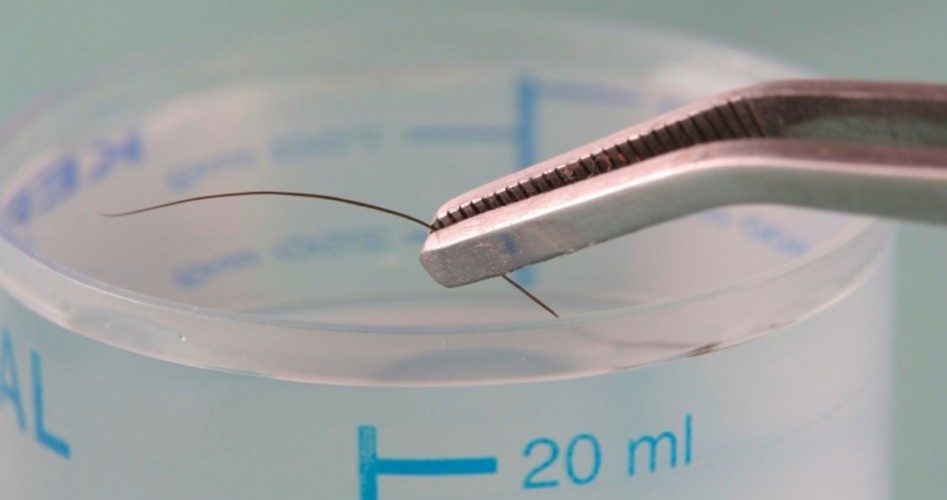
For more than two decades, Federal Bureau of Investigation (FBI) hair examiners, forensic analysts who review hairs found at crime scenes, routinely testified in ways that helped convict criminal defendants, including some who received the death penalty, in part on the basis of evidence that was less than conclusive. In fact, the evidence for the misleading testimony is so overwhelming that the FBI and the Justice Department have formally acknowledged the hair examiners’ failures even before their review of the cases is complete.
The review was spurred by increasing confirmation — DNA testing in particular — that forensic techniques such as hair and bite-mark matching, which are far more subjective than television detective shows would have us believe, have led to the wrongful conviction of scores of defendants. Worse still, the Justice Department has been aware of the problem for years but kept mum about it, with federal prosecutors failing to notify defendants or their attorneys of problems with forensic evidence, the Washington Post reported in 2012.
The National Association of Criminal Defense Lawyers (NACDL) and the Innocence Project, a nonprofit that seeks to exonerate wrongfully convicted individuals, are assisting the government with the review. Under this agreement, the groups were permitted to release results after the first 200 convictions had been reviewed.
Looking at the results, it’s easy to see why the government decided to admit its examiners’ culpability at this early stage. “Of 28 examiners with the FBI Laboratory’s microscopic hair comparison unit, 26 overstated forensic matches in ways that favored prosecutors in more than 95 percent of the 268 trials reviewed so far,” wrote the Post. Thirty-two of the defendants were sentenced to death; of those, 14 have either been executed or died in prison.
“The review confirmed that FBI experts systematically testified to the near-certainty of ‘matches’ of crime-scene hairs to defendants, backing their claims by citing incomplete or misleading statistics drawn from their case work,” the paper wrote.
This isn’t necessarily the result of malice on the part of hair examiners. As the Post noted, “There is no accepted research on how often hair from different people may appear the same.” What’s more, until 2012 the FBI itself had no “written standards defining scientifically appropriate and erroneous ways to explain results in court.” At the same time, given the fact that the experts’ testimony was so heavily biased in favor of the prosecution, it’s not hard to imagine that some of it came about because the examiners felt that they were on the same team, so to speak, as the prosecutors.
The FBI and Justice Department issued a statement saying they will continue to address all cases and “are committed to ensuring that affected defendants are notified of past errors and that justice is done in every instance. The Department and the FBI are also committed to ensuring the accuracy of future hair analysis testimony, as well as the application of all disciplines of forensic science.”
But given the results of the review thus far, not everyone is convinced that all will be well going forward.
“The FBI’s three-decade use of microscopic hair analysis to incriminate defendants was a complete disaster,” Innocence Project co-founder Peter Neufeld told the Post. “We need an exhaustive investigation that looks at how the FBI, state governments that relied on examiners trained by the FBI and the courts allowed this to happen and why it wasn’t stopped much sooner.”
NACDL executive director Norman Reimer told the newspaper, “Hopefully, this project establishes a precedent so that in future situations it will not take years to remediate the injustice.”
That may be a vain hope, however, because of the way the court system functions, the Post observed:
University of Virginia law professor Brandon L. Garrett said the results reveal a “mass disaster” inside the criminal justice system, one that it has been unable to self-correct because courts rely on outdated precedents admitting scientifically invalid testimony at trial and, under the legal doctrine of finality, make it difficult for convicts to challenge old evidence.
“The tools don’t exist to handle systematic errors in our criminal justice system,” Garrett said. “The FBI deserves every recognition for doing something really remarkable here. The problem is there may be few judges, prosecutors or defense lawyers who are able or willing to do anything about it.”
Federal authorities are offering new DNA testing in cases with errors, if sought by a judge or prosecutor, and agreeing to drop procedural objections to appeals in federal cases.
However, biological evidence in the cases often is lost or unavailable. Among states, only California and Texas specifically allow appeals when experts recant or scientific advances undermine forensic evidence at trial.
Defense attorneys say scientifically invalid forensic testimony should be considered as violations of due process, as courts have held with false or misleading testimony.
Of course, even if an appeal is granted and the hair testimony is found to be false, a defendant could still remain behind bars. Other evidence may well be sufficient to uphold his conviction.
When complete, the hair-testimony review will encompass about 2,500 cases in which examiners declared hair matches, drawn from the over 21,000 federal and state requests to the FBI’s hair-comparison unit between 1972 and 1999. The agency said it is close to completing reviews of 350 trial testimonies and 900 lab reports, with about 1,200 cases still in the queue.
The review has been hampered somewhat by the age of some of the cases; those before 1985 are difficult to check because they weren’t stored electronically. In addition, police or prosecutors did not respond to information requests in 700 cases, preventing review of those cases.
Even if things are cleaned up at the federal level, there is still the problem of the 500 to 1,000 state and local crime-lab analysts who were trained by the same FBI examiners who gave the flawed testimony. Efforts are under way in a number of states to review their hair-examiner cases.
All of this serves as a reminder that even when it is carrying out its proper functions, government bears close scrutiny at all times. Justice and injustice are often separated by only a hairsbreadth.



